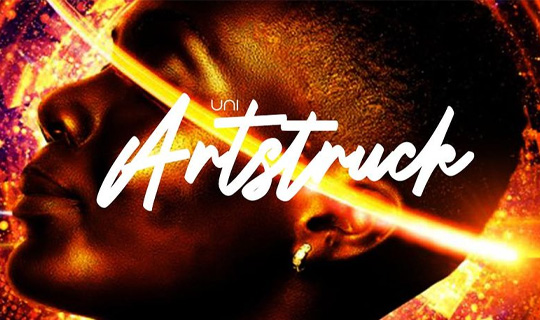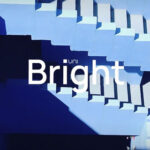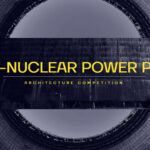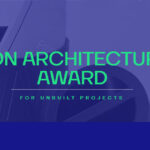Submission: May 3, 2022
Registration: May 2, 2022
Language: English
Location: Seattle, United States
Prizes: Please see the details below
Type: Open
Art has always played an important role in human lives, but it has never been a rule for art to be of meaning or representative of something rigid. Abstract forms of art have started coming up with these forms of nonobjective pieces that are an unrestricted portrayal of experiences and sometimes even elusive play of visuals and perceptions.
Abstract art started around the 19th century, a period that was characterized by the vast popularity of imitative and anecdotal representation. Movements like Romanticism, symbolism and expressionism were some of the movements that started around the same time that went against classicism and embraced the newfound freedom.
Abstract art has evolved and seeped into various forms today. In a way, it is currently the golden age for abstract art with so many talented and equally creative abstract art pieces and artists coming up around the world. To make it a movement that doesn’t die out or become a ubiquitous one, it is important they are protected and represented appropriately. Architecture and design being closely knit relatives can help in uplifting and shaping this art form better.
BLOCKCHAIN, NFT’S AND ART
With digital media and technology becoming a fastly growing entity, art forms have found a new and fast reaching platform to be showcased. But this has also made it easy for it to be duplicated or shared with the public faster than the credits can reach the original creator. So is the case with abstract art pieces that artists use social media to promote or sell.
NFT – Non-fungible tokens are a new way to achieve this individuality. Using these tokens that are assigned to each art piece, the piece achieves a unique status that cannot be duplicated. This gives the piece the value it deserves. Traditional museums such as the Guggenheim Museum in NY have started to look into this method of art display as they are a “nascent, fast-growing, highly scalable area of the art world” according to its administrators.
But traditional art pieces and museums that contain provisions based on the principle of displaying artworks for people to look at and appreciate, how would this established typology and planning of how a museum defines its collection change with NFT’s and digital art in the picture?
BRIEF
Design an abstract art museum that displays both traditional and NFT art pieces.
Infrastructure for display and transaction required for all types of art pieces are to be provided. Bringing a balance between the two types of art pieces displayed should be prime. The main purpose would be to provide apt translation methods of the NFT’s.
Traditional art museums around the world have focused on providing an infrastructural building with complementary aesthetics for the artwork displayed inside, instead of reflecting the essence of those artworks. In this project, the museum is set to display abstract art pieces and to reflect their essence in the design without overpowering the objective of the facility will be key.
The materials used and the design of the building should be contextual to its surroundings. The built form must be able to connect with the people, through its form, layout or spaces. The relationship of the building with the context, both in physical and mental terms must be explored.
Eligibility
- The minimum eligible age for participation is 18 years.
- The competitions are open worldwide for designers from any discipline.
- You can participate as an individual or as a team of a maximum of 4 members.
- All students and professionals can participate in the competitions.
- For Students: A student is someone who is currently enrolled in a full-time graduate/undergraduate program at a university anywhere in the world on the date of registration. We will need proof of identity upon the result declaration. The proof of identity should clearly state that you were enrolled in the institution at the time of registration. You may also produce a bonafide/authorized certificate from the institution as proof of identity. Students are allowed to involve one mentor/professor/guide in their team provided the mentor has been authorized via a bonafide certificate of the University.
- All the participants who do not belong to the student category will be considered professionals by default. PhD candidates will also be considered professionals.
- Institutional access is a program for students only if they are participating in the competition as a group of 20 people and want to submit 5-20 entries together. Institutional access has to be done under the guidance of a mentor/professor.
- A team with even one professional will be considered as a professional entry.
PRIZES
Winner – 6000 USD Cash+Crafted Trophy & certificate + UNI Year Book Copy + UNI Merchandise + Insignia + Opportunity to associate with UNI as a curator
Runner – Up – 6 x 1400 USD Cash+Crafted Trophy & certificate + UNI Year Book Copy + UNI Merchandise+Insignia
People’s Choice – 4 x 600 USD Cash+Crafted certificate + Insignia
Honorable Mention – 12 x 600 USD Cash+Crafted certificate + Insignia
The prize pool is dependent on the total number of registrations received. Please check the awards and fees section to learn more about it. There will be a total of 100 (20%) entries that will be shortlisted for the final awards. All the shortlisted entries will be entitled to e-certificates.
SCHEDULE
26 November 2021, 4:00 PM GMT+01:00 – Regular registration starts
26 November 2021, 4:00 PM GMT+01:00 – Public voting starts
02 May 2022, 5:00 PM GMT+02:00 – Regular registration ends
03 May 2022, 5:00 PM GMT+02:00 – Submission ends
18 May 2022, 5:00 PM GMT+02:00 – Shortlisted entries announced
18 June 2022, 5:00 PM GMT+02:00 – Public voting ends
30 June 2022, 5:00 PM GMT+02:00 – Result announcement








